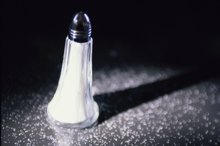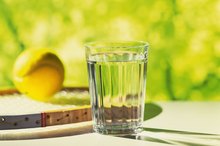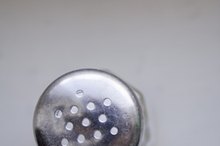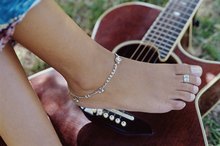What does fact checked mean?
At Healthfully, we strive to deliver objective content that is accurate and up-to-date. Our team periodically reviews articles in order to ensure content quality. The sources cited below consist of evidence from peer-reviewed journals, prominent medical organizations, academic associations, and government data.
- MayoClinic.com: Sodium: How to Tame Your Salt Habit Now
- Cleveland Clinic: Low-Sodium Diet Guidelines
The information contained on this site is for informational purposes only, and should not be used as a substitute for the advice of a professional health care provider. Please check with the appropriate physician regarding health questions and concerns. Although we strive to deliver accurate and up-to-date information, no guarantee to that effect is made.
Foods to Avoid for Edema
Edema is characterized by an abnormal accumulation of fluids in your body. It is most commonly seen in pregnant women and the elderly, although it can affect anyone. The fluid collects in your hands, feet, legs, ankles and face. Eating a healthy diet and avoiding foods that contain high amounts of sodium may help decrease your edema.
Starches
High intakes of sodium causes your body to retain fluids 1. Talk to your doctor about how much you should consume each day 1. Most healthy adults should limit their sodium intake to 2,300 mg a day, according to the Mayo Clinic. Read food labels to help you limit the sodium in your diet 1. A low-sodium food item contains less than 140 mg of sodium per serving.
Vegetables
Does Too Much Salt Intake Cause Swelling of the Left Side Ankle?
Learn More
Vegetables are naturally low in sodium and can be a healthy choice when prepared fresh or frozen without any added sauces or salty seasonings. Some canned vegetables contain sodium -- read the Nutrition Facts labels on foods to avoid salty varieties. You should also avoid any frozen vegetables with added sauces. Tomato and vegetable juice also contain high amounts of sodium and should be avoided if you have edema.
- Vegetables are naturally low in sodium and can be a healthy choice when prepared fresh or frozen without any added sauces or salty seasonings.
- Tomato and vegetable juice also contain high amounts of sodium and should be avoided if you have edema.
Meats and Meat Alternatives
Like vegetables, fresh meats prepared without added sauces are naturally low in sodium. However, processed meats may contain significant amounts of sodium. Meat choices to avoid when you have edema include:
- bacon
- sausage
- luncheon meats
- hot dogs
- ham
- canned tuna
Canned legumes can also be a source of sodium, prepare your own using dried beans to limit your sodium intake. Salted nuts contain high amounts of sodium and should be avoided, instead choose unsalted nuts.
- Like vegetables, fresh meats prepared without added sauces are naturally low in sodium.
- Salted nuts contain high amounts of sodium and should be avoided, instead choose unsalted nuts.
Dairy Foods
How to Get Rid of Excess Water Weight From Too Much Salt
Learn More
Processed dairy foods such as hard and soft cheese may contain high amounts of sodium and should be avoided if you are trying to control edema. Buttermilk also contains high amounts of sodium and should be avoided.
Convenience Foods
Convenience and prepared foods tend to be very high in sodium and should be avoided by people with edema. High sodium convenience foods include frozen meals, soups and rice and pasta mixes. Fast food and most restaurant foods also contain high amounts of sodium. You should avoid all fast food if you have edema and you may want to request your food be prepared without salt at sit-down restaurants.
- Convenience and prepared foods tend to be very high in sodium and should be avoided by people with edema.
Seasonings and Condiments
Seasonings and condiments can also be a source of sodium in your diet. Avoid any seasonings that mentions salt in the title such as garlic salt or celery salt. In addition, you want to avoid high-sodium condiments such as catsup, prepared salad dressings and soy sauce.
Related Articles
References
- MayoClinic.com: Sodium: How to Tame Your Salt Habit Now
- Cleveland Clinic: Low-Sodium Diet Guidelines
- American Heart Association. Sources of Sodium.
- Centers for Disease Control and Prevention. Top 10 Sources of Sodium. 2017.
- Institute of Medicine. Dietary Reference Intakes Tables and Application. National Academies of Sciences, Engineering, and Medicine, Health and Medicine Division. 2015.
- United States Department of Agriculture. Dietary Guidelines for Americans 2015–2020. United States Department of Health and Human Services. 2015.
Writer Bio
Jill Corleone is a registered dietitian and health coach who has been writing and lecturing on diet and health for more than 15 years. Her work has been featured on the Huffington Post, Diabetes Self-Management and in the book "Noninvasive Mechanical Ventilation," edited by John R. Bach, M.D. Corleone holds a Bachelor of Science in nutrition.









